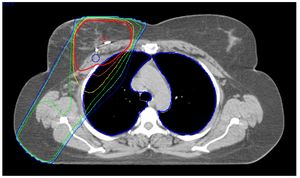Goma, DRC — The takeover of Goma by the Rwanda-backed M23 rebels has plunged the city and its desperate residents, once vibrant, now barely clinging to survival, deep under the shadow of conflict. The harrowing events unfolded as M23 rebels, after weeks of fierce fighting, claimed almost full control over the city, home to roughly two million people, creating chaos and uncertainty for its inhabitants.
Evidence of the violent takeover is starkly visible throughout Goma's neighborhoods, particularly in the Kahembe area near the Rwandan border. Many homes showed signs of shelling, remnants of the conflict which has been simmering for decades and reached the city's doorstep last Sunday. "We have lost everything," lamented Marie Sifa, who fled her home with her children, only to find herself caught up in the turmoil.
While the death toll remains unclear, hospitals are quickly becoming overwhelmed with the wounded, as families emerge from hiding places, anxiously searching for food and water. The once-busy streets of Goma now hold the remnants of chaos, with deceased bodies lying abandoned and stores raided, leaving behind empty shelves where goods once thrived.
The situation worsened as locals discovered the Congolese military, originally tasked with their protection, had failed them entirely. Many soldiers abandoned their posts as the M23 forces advanced, leaving their troops to fend for themselves. "We felt betrayed," said Lt. Col. John Asegi, captured by M23. Facing the loss of solidarity from their leaders, soldiers turned their anger toward President Felix Tshisekedi, vowing vengeance against their absent commanders.
Corneille Nangaa, one of the rebel leaders, attempted to assure the people of Goma during a news conference: "Go back to normal activities," urging them to resume their lives, but residents know this is far from their reality. With stores looted, supplies dwindling, and the specter of cholera looming as untreated water becomes scarce, many are left wondering how they will cope.
Thousands of internally displaced people have been swept up by the waves of conflict, with makeshift camps overflowing with families who fled from other regions. These camps are particularly perilous; as the M23 closed in, desperate individuals carried what little they owned, seeking refuge, only to find Goma under siege. Hospitals are overcrowded, suffering from shortages of medical supplies, as loved ones like Elysée Mopanda struggle to find one another amid the chaos.
Water has become the most pressing concern, with supply lines severed during the fighting. Residents are forced to walk miles to Lake Kivu, begging for water or paying exorbitant prices for what little is available. Thirteen-year-old Tailor Mukendi shared his account: "We couldn’t leave the house because of the gunshots and the bombs falling. I had to help my family find water, no matter the risk."
The repercussions of this takeover extend beyond immediate survival; M23 rebels control vast reserves of minerals, complicity underscored by the presence of Rwandan troops bolstering their ranks. They have goals extending far beyond Goma, with intentions to march toward the country’s capital, Kinshasa. The looming potential for regional destabilization draws concern across international borders.
Those witnessing the events firsthand, especially the children, are left with haunting memories of violence and loss. Goma’s schools are now havens for those seeking shelter, but the question of safety hangs heavily over every sheltering place. "I don’t know where to go," Elysée Mopanda stated, tears streaming down her face as she searched for her lost children.
Even though the immediate fighting may subside, Goma’s fate remains precarious. The humanitarian crisis is acute, with civilians trapped between the aggressors and their fading hope for stability. Urgent calls for aid have been made, yet the infrastructure to respond is crumbling under continued assault.
With the military forces not only failing to protect civilians but also joining the ranks of the M23, the future appears bleak for Goma. The local population battles both the chaos of war and their own survival, caught under the M23's iron grip.
Today, the region's fragile stability teeters precariously, held together only by the dwindling resources of Goma’s resilient but battered citizens. They face the monumental challenge of finding normalcy amid destruction, and as the days go by, the question remains: how long can they endure?



